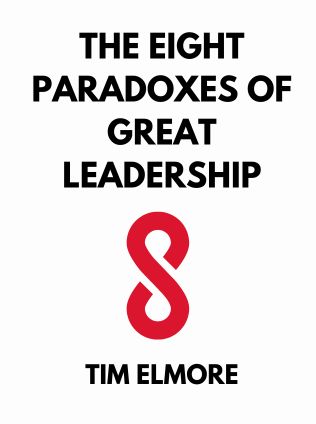
The Eight Paradoxes of Great Leadership
Embracing the Conflicting Demands of Today's Workplace
By Tim Elmore
Published 11/2021
About the Author
Dr. Tim Elmore is a renowned author, speaker, and founder of Growing Leaders, a non-profit organization based in Atlanta, Georgia. He has dedicated his career to developing emerging leaders. Elmore’s experience spans over two decades working alongside Dr. John C. Maxwell, a celebrated leadership expert. His insights have been featured in prominent publications such as the Wall Street Journal, the Washington Post, USA Today, and Psychology Today. Additionally, Elmore has appeared on CNN’s Headline News and Fox and Friends to discuss leadership across generations. With over 35 books to his name, Elmore continues to influence leaders worldwide through his innovative ideas and practical strategies.
Main Idea
"The Eight Paradoxes of Great Leadership: Embracing the Conflicting Demands of Today’s Workplace" by Tim Elmore explores the complex and often contradictory traits that leaders must embody to succeed in the modern, volatile, uncertain, complex, and ambiguous (VUCA) world. Elmore emphasizes the need for leaders to balance opposing qualities, such as confidence and humility or being both visible and invisible. By mastering these paradoxes, leaders can navigate the demands of the 21st-century workplace, inspire their teams, and drive meaningful change.
Table of Contents
- Uncommon Leaders Balance Both Confidence and Humility
- Uncommon Leaders Leverage Both Their Vision and Their Blind Spots
- Uncommon Leaders Embrace Both Visibility and Invisibility
- Uncommon Leaders Are Both Stubborn and Open-Minded
- Uncommon Leaders Are Both Deeply Personal and Inherently Collective
- Uncommon Leaders Are Both Teachers and Learners
- Uncommon Leaders Model Both High Standards and Gracious Forgiveness
- Uncommon Leaders Are Both Timely and Timeless
Uncommon Leaders Balance Both Confidence and Humility
Uncommon leaders possess inspiring confidence yet express it with palpable humility. Leading today requires combining these two attributes. Reality changes so quickly; leaders cannot become arrogant but must remain in a learning posture. At the same time, team members long for their leader to inspire them with confidence. In today’s complex world, people look for anyone with a clear sense of confidence. Teams seldom move forward without seeing it in their leader. At the same time, people demand that a leader’s confidence doesn’t blind them to their own humanity. Leaders believe in themselves, but they don’t believe they can do it alone.
Confidence furnishes the energy of certainty, while humility offers the flexibility of teachability. This combination creates synergy in partnerships. As Elmore states, "Confidence plus humility furnishes the energy of certainty and the flexibility of teachability to create synergy in partnerships."
One of the leader’s tasks is to instill a sense of confidence in their team. This doesn’t mean leaders have all the answers up front, nor does it mean they’re absolutely certain everything will pan out according to plan. It simply means that, as our world experiences uncertainty, the human longing for confidence grows proportionately. Uncommon leaders understand this need and leverage it to increase their influence.
“Humility makes your confidence believable. When team members only see confidence, they begin to suspect you’re not being honest; some piece of the puzzle is missing.” - Tim Elmore
Here are some ideas on how you can begin practicing this paradox:
- Argue as if you believe you’re right, but listen as if you believe you’re wrong. This approach helps in decision-making meetings by ensuring all perspectives are considered.
- Be willing to lose a few battles to win the war. This is particularly important during conflicts with team members, where the long-term relationship and goals are more important than winning a single argument.
- Remain teachable in new contexts. Even from those under your care, staying open to learning helps improve ideas and fosters a collaborative environment.
Uncommon Leaders Leverage Both Their Vision and Their Blind Spots
While vision and blind spots seem like an oxymoron, they are generally both at work when great leaders grow or start something. Vision gives leaders (and teams) a direction, but blind spots are often the very motivator that enables them to approach an idea in an unconventional way—and believe they can pull it off. Most new ventures require a leader to possess a clear target they want to hit. At the same time, their inability to see all the obstacles or challenges ahead of time helps them to maintain their energy as they try to hit their target. In short, leaders usually have to see something and fail to see something to reach their goal.
Sign up for FREE and get access to 1,400+ books summaries.
You May Also Like
The Subtle Art of Not Giving a F*ck
A Counterintuitive Approach to Living a Good Life
By Mark MansonRich Dad Poor Dad
What the Rich Teach Their Kids About Money - That the Poor and Middle Class Do Not!
By Robert T. KiyosakiHow To Win Friends and Influence People
The All-Time Classic Manual Of People Skills
By Dale CarnegieQuiet: The Power of Introverts
The Power of Introverts in a World That Can't Stop Talking
By Susan Cain



















